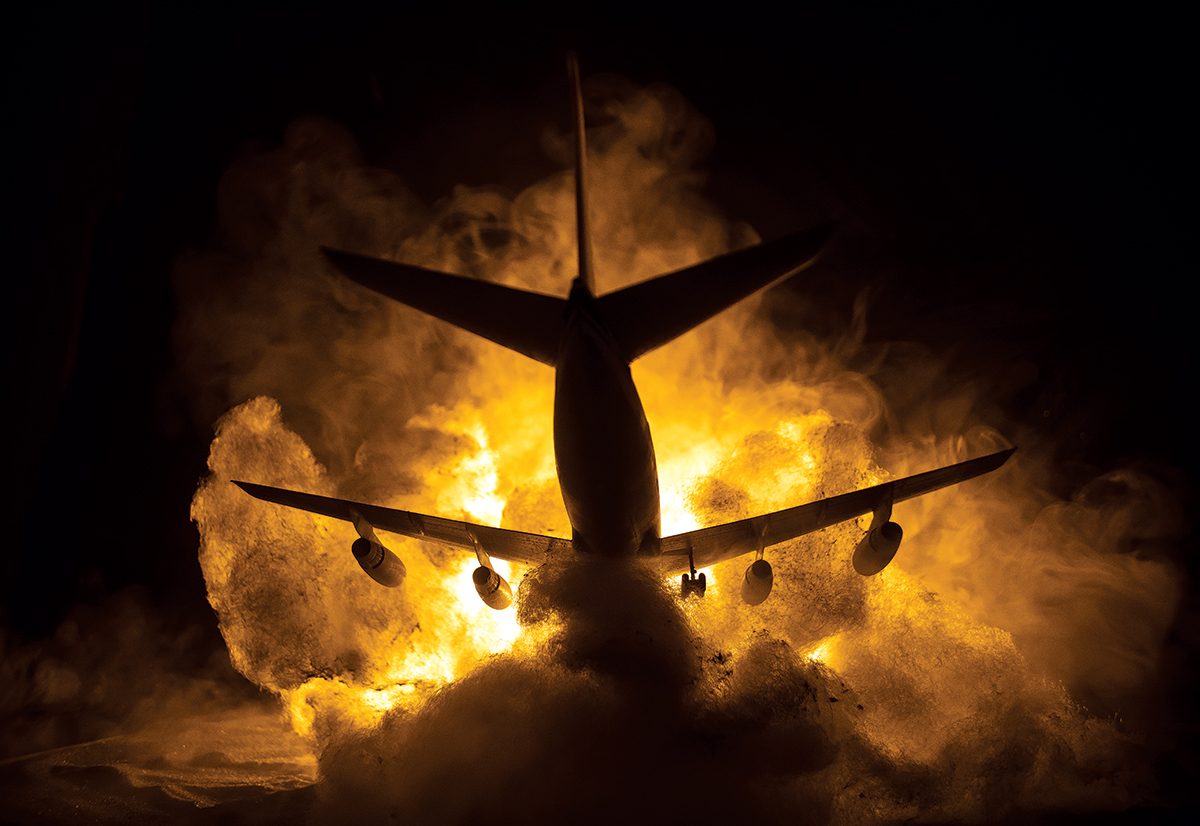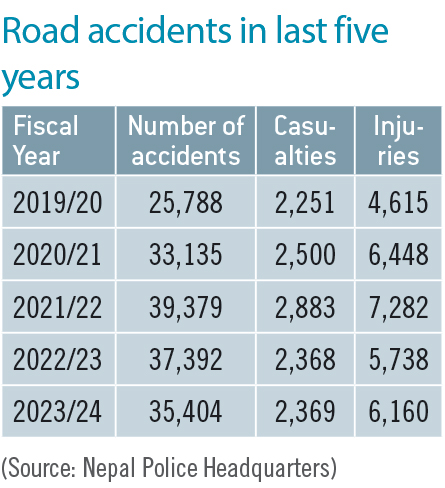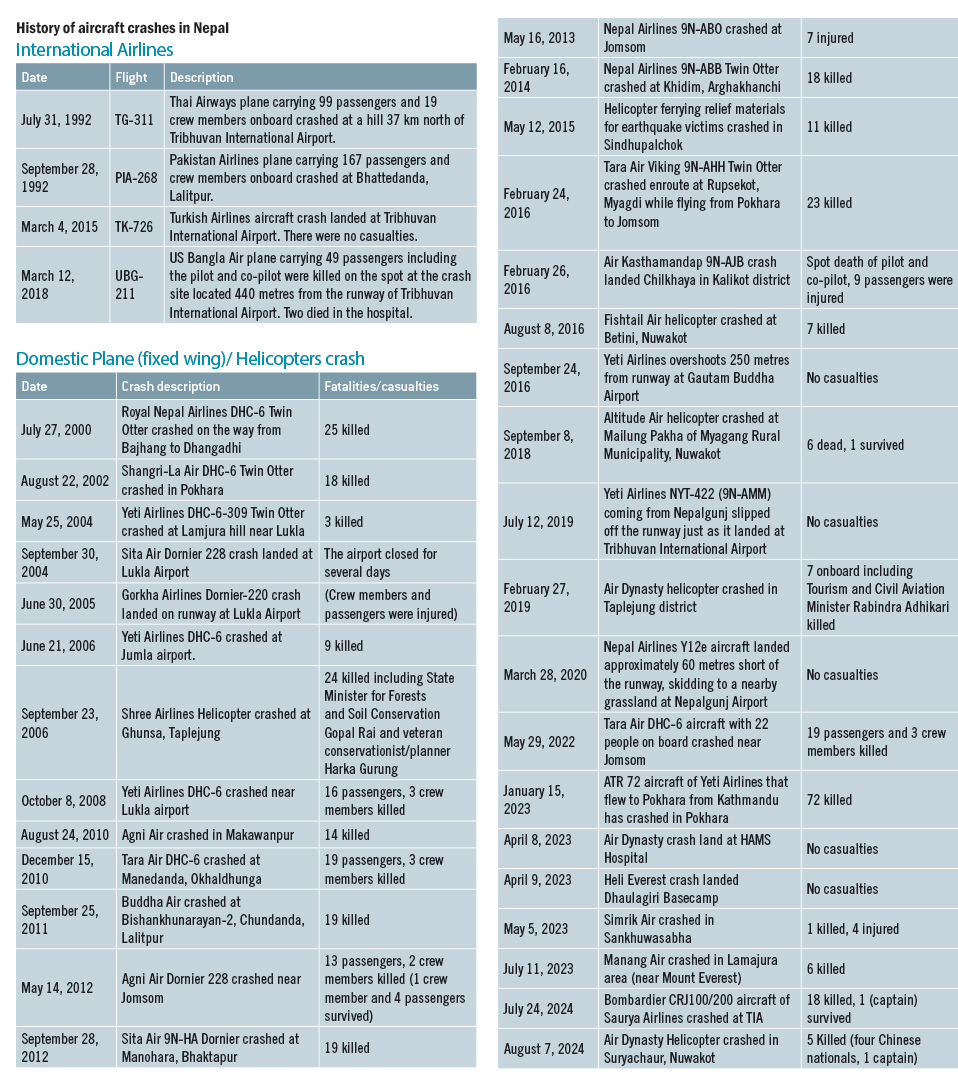
Travelling by road or air in Nepal is increasingly becoming an intimidating experience. Poor road infrastructure, frequent natural disasters, lack of vehicle fitness testing, alcohol and drug consumption, reckless driving, and lax air safety monitoring have contributed to the rise in the number of accidents over the years.
Heavy rains, floods and landslides that occurred on September 27-28 this year claimed the lives of many people along highways as vehicles were buried in landslides or swept away. Hundreds of passengers have been trapped in traffic jams for hours as the connection to Kathmandu has been cut off due to road destruction, landslides and other obstructions. To make matters worse, there are no proper alternate evacuation routes which has compelled many to walk to their destinations.
The government has still been unable to locate two public buses that plunged into the Trishuli River near Simaltal in Chitwan district on July 12. A study panel report revealed that the sub-road sections constructed by local municipalities near the top of the hills was responsible for the mudslide. There is no proper monitoring or alerting mechanisms in place to avoid such mishaps.
Narrow roads on steep hills and snowfall in mountain areas require cautious driving. Nepal’s challenging terrain requires multiple measures to minimise accidents. According to Nepal Police, “Safety barriers along the road, lighting systems, monitoring of alcohol and drug consumption, strict adherence to driving rules including speed control through time card implementation, provision of at least two drivers in long-route vehicles, timely information regarding the monsoon, and driver awareness about the geography can be implemented to minimise road accidents.”
In addition to accidents caused by natural disasters, the frequency of road accidents has increased significantly. According to Nepal Police, 2,369 people lost their lives and 6,160 were injured in 35,404 accidents in Fiscal Year 2023/24.

Rampant construction of fair-weather roads by local level governments without adhering to proper road-construction norms on hills has contributed to an increase in accidents, according to Nepal Police. “Apart from this, foreign national drivers, due to lack of proper information regarding the geography, have also been identified as a major cause of accidents.”
Accidents have resulted in a significant loss of life and people having to live with serious injuries burdened by lifelong medical expenses. According to Nepal Police, 12,371 people have lost their lives in accidents in the last five years. Deputy Inspector General of Police, Dan Bahadur Karki, notes that affected families not only lose loved ones but also encounter income shocks if they have lost the breadwinner or caregiver.
The World Health Organisation (WHO) has identified Nepal as having a high casualty rate in South Asia, with 28 deaths per 100,000 people in road accidents. The WHO South-East Asia Regional Status Report on Road Safety, released in September, estimated road traffic deaths per 100,000 population in Nepal (28.2), Thailand (25.4), Myanmar (19.3), Bangladesh (18.6), and India (15.4) to be higher than the global rate of 15 road traffic deaths per 100,000 population.
In the South-East Asia region, vulnerable road users, including pedestrians, motorised two and three-wheeler users and cyclists, account for 66% of all reported road traffic deaths. Drivers/riders of two-/three-wheeled motorised vehicles alone represent 46% of these deaths.
The WHO report also substantiates the Nepal Police statement of them facing challenges with insufficient number of breathalyzers along with inadequate training and sobriety checkpoint infrastructure to conduct the test. These challenges have hindered the successful implementation of the programme across the country. In just a decade of enforcement, the police have detected nearly half a million cases of drunk-driving offences in Kathmandu valley.
Moreover, Nepal does not have a national road safety strategy or action plan and the government always states that it is ‘under preparation’.
Frequent air crashes raise eyebrows on regulatory capacity
Despite the various safety standards that need to be followed, Nepal has witnessed frequent air crashes. Two recent fatal aircraft crashes have raised eyebrows on the regulatory capacity of the Civil Aviation Authority of Nepal (CAAN).
A Bombardier CRJ100/200 aircraft of Saurya Airlines crashed at Tribhuvan International Airport on July 24 this year, killing 18 people. The captain was the sole survivor of the fatal crash that took place within a few seconds of take-off. The preliminary report of the investigation panel states that the ferry flight carrying staff of the airline company crashed due to load imbalance. It is reported that the equipment loaded onto the plane was not secured properly, and when the plane took off, the load shifted to one side due to the plane’s tilt during takeoff. Planes typically tilt during takeoff to generate more lift and overcome gravity.

Another mishap occurred on August 7 this year, less than a month later. An Air Dynasty helicopter carrying four Chinese nationals crashed at Suryachaur in Nuwakot, killing all five people on board, including the captain.
Frequent air crashes and road accidents have had a negative impact on Nepal’s tourism and foreign investment, according to Binayak Shah, a seasoned tourism entrepreneur and President of the Hotel Association Nepal.
Air accidents have dampened Nepal’s efforts to be removed from the European Union’s blacklist and to promote positive developments globally. The tourism industry’s expectation of a quick recovery from the damage caused by the Covid 19 pandemic and subsequent global economic slowdown has been shattered by the frequent air and road accidents, according to Shah.






